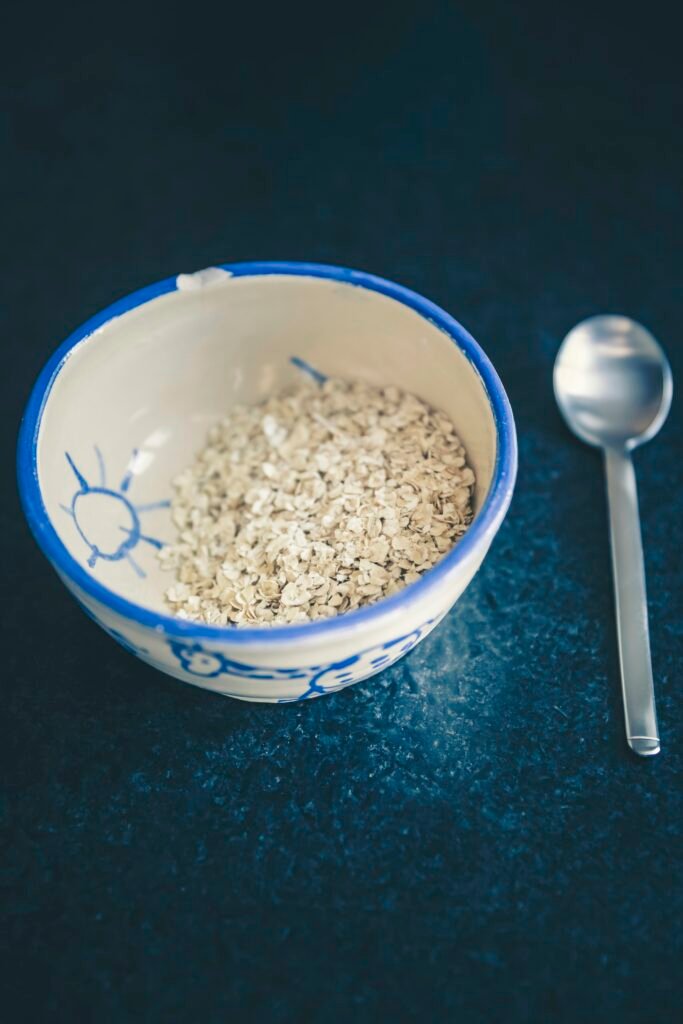You might be surprised to learn that the legumes you love, like kidney beans, lentils, and chickpeas, could be causing digestive issues. In this article, we will delve into the topic of oxalates in legumes and their effect on digestion. Oxalates are naturally occurring compounds found in many plant-based foods, including legumes. While these compounds have their benefits, they can also pose challenges for some individuals, especially those prone to kidney stones. So, if you’ve been experiencing digestive discomfort after indulging in your favorite legume dishes, keep reading to find out how oxalates could be the culprit and what you can do to mitigate their impact on your digestion.
Understanding Oxalates
Definition and Sources
Oxalates are naturally occurring compounds found in a variety of plant foods, including legumes. They are often referred to as anti-nutrients because they can interfere with the absorption of certain nutrients in the body. Legumes that are high in oxalates include spinach, rhubarb, beet greens, Swiss chard, parsley, sorrel, purslane, collard greens, kidney beans, and soybeans.
Chemical Structure
Oxalates belong to a group of organic acids known as dicarboxylic acids. Their chemical structure consists of two carboxyl groups linked together by an oxygen atom. This structure gives them their ability to bind with minerals such as calcium, forming insoluble calcium oxalate crystals.
Functions in Plants
In plants, oxalates serve as a defensive mechanism against predators. They play a role in deterring herbivores from consuming the plant by making the tissues taste bitter and potentially harmful. Oxalates also function as storage forms of calcium, which is essential for plant growth and development.
Types of Legumes High in Oxalates
Spinach
Spinach is a leafy green vegetable commonly consumed around the world. It is also one of the legumes with the highest oxalate content. While spinach may be a nutritious vegetable with various health benefits, individuals who are prone to kidney stones or have conditions that require them to limit oxalate intake should be cautious.
Rhubarb
Rhubarb is a unique vegetable that is often used in pies and desserts. It has a tart flavor and is known for its high oxalate content. When consumed, rhubarb can contribute to the overall oxalate intake in the diet, potentially affecting individuals with kidney stone issues.
Beet Greens
Beet greens, the leafy tops of the beetroot plant, are rich in nutrients, including vitamins A and K. However, they are also high in oxalates. Consuming beet greens in large quantities may increase oxalate levels in the body, which can pose a challenge for those with specific health concerns.
Swiss Chard
Swiss chard is a popular leafy green vegetable that belongs to the same family as beets and spinach. While it is packed with various vitamins and minerals, it is worth noting that Swiss chard contains a notable amount of oxalates. Thus, individuals with certain health conditions should consume it in moderation.
Parsley
Parsley is an aromatic herb commonly used as a garnish or in cooking. It adds flavor and visual appeal to dishes, but it is also high in oxalates. This means that individuals with a history of kidney stones or other conditions influenced by oxalate intake should exercise caution when consuming parsley.
Sorrel
Sorrel is a tangy herb with a lemony flavor commonly used in soups and sauces. It contains oxalates and can contribute to the overall dietary oxalate load. It is advisable for individuals with certain health conditions to limit their consumption of sorrel.
Purslane
Purslane is an edible weed that is often used in salads and stir-fries. It has a slightly sour taste and is rich in omega-3 fatty acids. However, it is also high in oxalates. People with a predisposition to kidney stones or other conditions influenced by oxalate intake should be cautious when incorporating purslane into their diets.
Collard Greens
Collard greens are a nutritious leafy vegetable that is commonly consumed in Southern cuisine. They are an excellent source of vitamins A and K. However, collard greens also contain oxalates, which can affect individuals with certain health conditions.
Kidney Beans
Kidney beans are a popular legume used in various cuisines around the world. They are a good source of plant-based protein and dietary fiber. While kidney beans offer numerous health benefits, it is important to note that they contain oxalates and should be consumed in moderation, especially by those prone to kidney stones.
Soybeans
Soybeans are a versatile legume widely consumed in various forms, such as tofu, soy milk, and soybean oil. They are an excellent source of plant-based protein and are packed with essential nutrients. However, soybeans also contain oxalates. Individuals with certain health conditions should consider their oxalate intake when incorporating soybeans into their diets.

Health Benefits of Legumes
Nutritional Profile
Legumes, including those high in oxalates, are nutrient powerhouses. They are an excellent source of plant-based protein, dietary fiber, vitamins, and minerals. Consuming legumes can provide essential nutrients that support overall health and well-being.
Protein Content
Legumes are considered one of the best plant-based sources of protein. They are an important protein option for vegetarians, vegans, and individuals looking to reduce their consumption of animal products. Protein is necessary for the growth, repair, and maintenance of various tissues in the body.
Fiber Content
Legumes are rich in dietary fiber, which plays a crucial role in digestive health. Fiber adds bulk to the stool, promoting regular bowel movements and preventing constipation. It also helps regulate blood sugar levels, reduces cholesterol levels, and promotes satiety, making legumes a valuable addition to a balanced diet.
Mineral and Vitamin Content
Legumes are packed with essential minerals and vitamins. They are a good source of iron, magnesium, potassium, and folate. Iron is important for oxygen transport, magnesium helps maintain proper nerve and muscle function, potassium supports heart health, and folate is essential for cell growth and division.
Antioxidant Activity
Legumes contain a variety of antioxidants, which help protect the body against free radicals. Free radicals are unstable molecules that can cause damage to cells and contribute to the development of chronic diseases. Consuming antioxidant-rich foods, such as legumes, can help reduce the risk of oxidative stress and its associated health problems.
Digestive System and Oxalate Processing
Overview of Digestive System
The digestive system is responsible for breaking down food into smaller, absorbable molecules and eliminating waste products from the body. It consists of several organs, including the mouth, esophagus, stomach, small intestine, large intestine, and anus. Each organ plays a unique role in the digestion and absorption of nutrients.
Absorption of Oxalates in the Intestines
When oxalate-rich foods are consumed, the oxalates enter the small intestine. In the small intestine, oxalates can bind to minerals, such as calcium, to form insoluble calcium oxalate crystals. These crystals are not absorbed in the small intestine and are excreted through the feces.
Role of Gut Bacteria in Oxalate Metabolism
Gut bacteria play a crucial role in oxalate metabolism. Some bacteria in the intestines possess the ability to break down oxalates into harmless substances. These bacteria contain oxalate-degrading enzymes, such as oxalate decarboxylase and oxalyl-CoA decarboxylase. The breakdown of oxalates by gut bacteria is essential for overall oxalate handling in the body.

Interaction between Oxalates and Digestive Enzymes
Oxalate-Degrading Enzymes
Oxalate-degrading enzymes are responsible for breaking down oxalates into harmless byproducts. These enzymes help prevent the formation of calcium oxalate stones and maintain oxalate balance in the body. Some examples of oxalate-degrading enzymes include oxalate oxidase, glycolate oxidase, and formyl-CoA transferase.
Factors Affecting Enzyme Activity
The activity of oxalate-degrading enzymes can be influenced by various factors. Dietary components, such as vitamin B6 and magnesium, have been found to enhance enzyme activity. On the other hand, factors like low pH, high calcium levels, and other substances present in the intestines can inhibit enzyme activity.
Inhibition of Enzymes by Other Substances
Certain substances present in oxalate-rich foods can inhibit the activity of oxalate-degrading enzymes. For example, tannins and phytates, which are naturally occurring compounds found in some legumes, have been shown to interfere with oxalate-degrading enzyme activity. This inhibition can potentially increase oxalate absorption in the intestines.
Dietary Strategies to Reduce Oxalate Absorption
Adequate Calcium Intake
Consuming adequate amounts of calcium-rich foods can help reduce oxalate absorption in the intestines. Calcium can bind to oxalates, forming insoluble calcium oxalate complexes that are less likely to be absorbed. Including calcium-rich dairy products or fortified plant-based alternatives in meals containing oxalate-rich foods can be an effective strategy to reduce oxalate absorption.
Balancing Oxalate-Rich Foods with Low-Oxalate Foods
Combining oxalate-rich foods with foods that are low in oxalates can help balance the overall oxalate load in the diet. Including low-oxalate foods, such as grains, fruits, and vegetables, can help dilute the concentration of oxalates consumed and reduce the impact on overall oxalate absorption.
Cooking Methods and Oxalate Bioavailability
Certain cooking methods can help decrease the bioavailability of oxalates in legumes. Boiling legumes in water and discarding the cooking liquid has been shown to significantly reduce oxalate content. Soaking legumes overnight and then cooking them can also help reduce the oxalate content. Fermenting or sprouting legumes may also potentially decrease oxalates.
Use of Phytase Enzyme
Phytase is an enzyme that can break down phytates, which are substances that can inhibit oxalate-degrading enzyme activity. Including foods rich in phytase, such as whole grains and certain legumes, in the diet can help mitigate the inhibition of oxalate-degrading enzymes and promote better oxalate metabolism.

Preparation Methods to Decrease Oxalate Content
Soaking Legumes
Soaking legumes before cooking can help decrease the oxalate content. Soaking allows some of the oxalates to leach out into the soaking water, resulting in reduced overall oxalate levels. It is recommended to discard the soaking water and cook the legumes in fresh water.
Boiling Legumes
Boiling legumes in water can significantly reduce their oxalate content. Research has shown that boiling legumes for an extended period can lead to considerable oxalate reduction. Discarding the cooking water further helps remove any remaining oxalates.
Fermenting Legumes
Fermentation is a traditional food preservation method that can also help reduce the oxalate content in legumes. During fermentation, beneficial bacteria break down oxalates into less harmful forms. Fermented legume products, such as tempeh or miso, can be consumed as an alternative to unfermented legumes.
Sprouting Legumes
Sprouting legumes before cooking or consuming them raw can potentially decrease their oxalate content. As the legumes sprout, the oxalates may be converted into other compounds, resulting in reduced overall oxalate levels. Sprouting can also enhance the digestibility and nutrient availability of legumes.
Impact of Oxalates on Gut Microbiome
Gut Microbiome Composition
The gut microbiome is the collection of microorganisms, including bacteria, fungi, viruses, and other microbes, that reside in the intestines. It plays a crucial role in digestion, nutrient absorption, and overall health. The composition of the gut microbiome can vary significantly among individuals.
Effects of Oxalates on Microbial Diversity
High oxalate consumption can affect the composition and diversity of the gut microbiome. Studies have shown that an increased intake of oxalate-rich foods can promote the growth of oxalate-degrading bacteria in the gut. However, an excess of oxalates can also have negative effects on overall microbial diversity and increase the risk of dysbiosis, an imbalance in gut bacteria.
Role of Gut Microbes in Oxalate Metabolism
Certain gut bacteria possess oxalate-degrading enzymes that play a significant role in oxalate metabolism. These bacteria break down oxalates into less harmful substances, preventing the overabsorption of oxalates into the bloodstream. Imbalances in gut bacteria can disrupt this process and potentially contribute to the development of conditions related to oxalate accumulation.
Potential Health Risks of High Oxalate Consumption
Consuming high amounts of oxalates can pose potential health risks for certain individuals, particularly those with a history of kidney stones or those at risk of calcium oxalate crystal formation. Oxalates can combine with calcium in the urine to form kidney stones. Individuals with kidney stone issues or a hereditary predisposition should exercise caution and consult with healthcare professionals regarding their oxalate intake.
Conclusion and Recommendations
In conclusion, legumes, including those high in oxalates, offer various health benefits and are a valuable addition to a balanced diet. However, understanding the effects of oxalates on digestion is essential, especially for individuals with specific health concerns. It is important to consider moderation in legume consumption, particularly for those prone to kidney stone issues. Individual variation in oxalate tolerance should also be taken into account. Consulting with healthcare professionals can provide tailored recommendations and guidance on managing oxalate intake for optimal digestive health. By incorporating dietary strategies, such as balancing oxalate-rich foods with low-oxalate options and utilizing preparation methods to decrease oxalate content, individuals can enjoy the nutritional benefits of legumes while minimizing potential risks associated with oxalate consumption.

